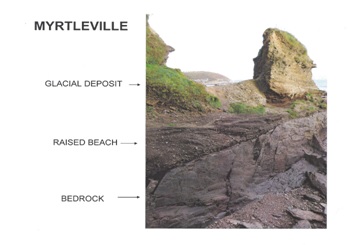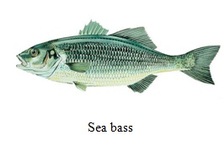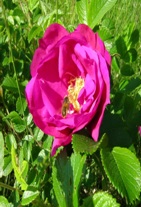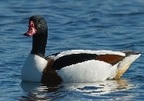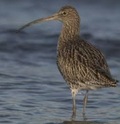About Fountainstown
HOW FOUNTAINSTOWN GOT ITS NAME |
|
The name Fountainstown is an anglicisation of the Irish ‘Baile Mhóinteán’ or ‘Baile Mhóntáin’, meaning the town of the moorland. The Irish word móinteán, meaning moorland, is usually pronounced ‘manntán’ in Co. Cork, so mhanntáin would be pronounced ‘vountáin’, which approximates as ‘fountain’. Courtesy of Diarmuid O Murchadha, Crosshaven |
Fountainstown House
|
Fountainstown House was originally built by the Roche's, a Norman family who appear to have acquired the lands of Fountainstown in the 15th or 16th century. In the early 17th century, the lands of Fountainstown came into the ownership of the Hodder family from Dorset in England. William Hodder acquired over 7000 acres in Co. Cork, which incorporated 432 plantation acres (700 statute acres) at Fountainstown, including a grist mill. He also obtained land at Kilmichael West and Gortnanoon. Fountainstown House became the seat of the Hodder family in Cork. Samuel Hodder, the son of William Hodder, and his wife Elizabeth, nee Boles, extended and completed the building of Fountainstown House in 1699. The older, back, part of the house is the original Roche farmhouse. The house is still preserved in its original form and is inhabited by the Hodder family to this day. Courtesy of Kae Lewis PhD, Tennessee |
FOUNTAINSTOWN SPORTS AND SOCIAL CLUB
|
In 1936,
the first pitch and putt course in Ireland was opened in
Fountainstown. The nine-hole course was
an immediate success and enthusiasm for this popular new game led to many more
pitch and putt courses opening in the country. Click here for further information about Fountainstown and it's links to the foundation of Pitch and Putt in Ireland. In the 1930’s, tennis courts, a children’s
play ground and a club house were established adjacent to the pitch and putt
course.
Today, Fountainstown Sports and Social Club continues to be a focal point in the area and Mass is celebrated each Sunday in the club house, which has retained its original character and is a “landmark” in the locality. A more detailed history of the club is available in The Club page. |
THE MINANE RIVER DAM
|
In the early 1900’s the village of Minane Bridge was subject to frequent flooding from the Minane River. Flood relief measures were first proposed by the British government prior to the First World War. It was intended to construct a dam and causeway approximately 100m upstream from the sandbar. However, after independence the scheme was shelved and it was not until the 1950’s that a reinforced concrete dam was constructed on Ringabella Creek, some 600m upstream of the location originally proposed. The dam has twelve sluice valves which open automatically when the tide recedes and close when the tide is advancing. |
RINGABELLA CREEK
|
The village of Fountainstown looks out onto Ringabella Creek, a sandy estuary at the mouth of the Minane River. The channel was navigable to a distance of about 5kms, as far as Minane Bridge in the 1800s. Cargos of sea coal and sea sand for use as fertilizer were transported up to Minane Bridge by this route during the 1700s and 1800s when transportation by sea for heavy goods was easier than by road. Wooden mooring posts, about 300mm in diameter and approximately 1m high, used for mooring the boats, are still to be seen on both the Fountainstown and Ringabella sides of the estuary. Across the Creek from Fountainstown, the rolling landscape of Ringabella can be seen. Extensive galena lead mines were worked here from the 1680’s to the 1840’s, employing up to 400 people at their peak. The ore from the mines was probably also transported by sea. A ferry boat operated on demand between the ferrypoint at Fountainstown and the quay at Ringabella up until the 1960’s. A rowing boat, capable of holding about five people went back and forth between the end of the spit in Fountainstown and the mooring point at Ringabella. |
THE GEOLOGY OF THE FOUNTAINSTOWN AREA
|
The rocks in the Fountainstown area are approximately 353 million years old. They belong to a rock unit called the Courtmacsherry Formation, which consists of calcareous mudstones, siltstones and muddy limestones and extends from Fountainstown/Ringabella to Courtmacsherry. The Courtmacsherry Formation has two divisions called 'Members'. The oldest division is the Fountainstown Member, which is dominated by mudstone and is best seen along the coast between Fountainstown and Myrtleville. The younger Ringabella Limestone Member is best seen between Ringabella Point and Ringabella Beach. The Fountainstown member is up to 264m thick. It is folded and forms part of the southward dipping limb of the Ringabella Syncline. Minor folds and cleavage planes are evident along the coast east of Fountainstown Beach. Ice age deposits overlie the rocks in the Fountainstown area and form the soft unconsolidated cliffs which are being rapidly eroded along the coastline. These deposits include a ‘raised beach’ which formed when sea levels were higher, about 130-160 thousand years ago. This raised beach is exposed on the south side of Myrtleville Bay. Some interesting fossils can be seen along the rocks at Fountainstown, including the one pictured on the left - the cast of a Brachiopod Spirifer, a type of shellfish which attached itself to the bottom of the seabed about 350 million years ago. On formation, the interior of the shellfish filled with silt, with the outline of the shellfish being imprinted onto the silt. Over time it transformed into the rock. |
fishing in Fountainstown
|
Rock Fishing
The rocks between Fountainstown, Poll Gorm and Fennell's Bay provide excellent summer fishing for pollock, mackerel and dogfish. Occasional thornback ray and sea bass can also form part of the angler's quarry. The best bait is sand eel fished behind a float for pelagic species or on the bottom for rays and dogfish. Spring tides and warmer weather are the best conditions to fish. |
|
Beach and Estuary Fishing
The beach is best fished on spring tides in the early morning or evening. Big flounder and dab are caught along with whiting and coalfish in the winter. Sea bass and the occasional large thornback ray are caught here in the summer and autumn. Fresh lugworm is the best bait with peeler crab a close second. Fresh sand eel is also an excellent bait for sea bass especially in late August. Thick lipped grey mullet and golden grey mullet can be also caught further up the estuary during the summer months. Light line of 4-5lb breaking strain used with small harbour ragworm as bait are the best tactics for mullet species in Fountainstown. Text courtesy of Ross Macklin |
the flora of fountainstown
The range of ecological habitats found in Fountainstown supports a corresponding diversity of interesting plant species. The environs of Fountainstown are species-rich botanically and are home to regional and national plant rarities.
In particular, Fountainstown sandspit, situated on the northern bank of the estuary of Ringabella Creek, this finger-shaped, calcareous (i.e. lime-enriched) sandspit protrudes into the estuary, and supports a very interesting mix of plants.
|
The locally dominant hybrid grass, Sand Couch (Elytrigia pungens) and Sea Couch (Elytrigia atherica), whose extensive root-system helps to consolidate the sand, thus reducing erosion of this habitat.
The pink-flowered Restharrow (Ononis repens) also helps in a minor way to stabilise the habitat photos courtesy of Jenny Seawright |
|
The main visual
floral spectacle is provided by the spectacular, lemon-flowered colonies of the sweet-scented Sea Radish (Raphanus raphanistrum ssp. maritimus) – a rare species in Cork Harbour. photo courtesy of Zoe Devlin
The equally spectacular Asian Rose (Rosa rugosa) has long been naturalised at this site, and now locally dominates the habitat. This densely prickly rose species bears large, potently scented, red or white blooms which, later in the year, give way to lustrous, tomato-like hips. photo courtesy of Gardenworld, Ballyphillip, Co. Wicklow |
Other interesting, colourful, established
aliens recently found on the sandspit include: Common Mallow (Malva sylvestris), Tree-mallow (Lavatera arborea), sea thrift (Armeria maritima), sea mayweed
(Matricaria maritima) and Snow-in-summer (Cerastium tomentosum), in addition to two, native, annual
species: Sea Rocket (Cakile maritima) and Round-leaved
Crane’s-bill (Geranium rotundifolium).
The very distinctive (and nationally rare) alien annual, Bristly Oxtongue (Picris echioides) has been established
here since at least 1978.
Text courtesy of Tony O’Mahony
Photos courtesy of Zoe Devlin
butterflies in fountainstown
The
townland of Gortigrenane or Gort an
Grianan (the field of the sun), immediately to the west of Fountainstown,
is noted for its rich native flora and fauna. The townland has a south-facing
aspect and steep slopes of unimproved grasslands. This habitat hosts a large variety of plants
and insects and, consequently, is very attractive to butterflies. Of the thirty-one species of butterfly to be
found in Ireland,
eighteen have recently been sighted in Gortigrenane.
Below is a selection of butterflies photographed in Gortigrenane.
Below is a selection of butterflies photographed in Gortigrenane.
Birds of ringabella creek & bay
Ringabella Creek is an estuarine habitat supporting a wide range of water birds especially during the winter months. East of the sandbar, the topography gradually becomes more maritime in appearance as it opens out into Ringabella Bay and the invertebrate-rich, fluvial mud of the estuary is replaced by less productive sand. There is a noticeable change in the variety of bird species as the estuary meets the sea. The surrounding fields provide a different range of habitats for other species but some of the estuary birds can also occasionally be seen using the fields especially at high tide.
Text courtesy of Tony Nagle, photos courtesy of Birdwatch Ireland
|
Red-throated Divers can be seen in the bay but their
numbers fluctuate in response to weather conditions. 4 or 5 birds can usually
be seen feeding on small fish and crabs. These birds arrive in October from Greenland, Iceland
and Scotland
and leave again in March, by which time they tend to have attained their bright
red-throated summer plumage.
|
|
The Shag is a close relative of the Cormorant. The
Shag is smaller and slimmer with a thinner bill and it has a noticeable crest
on its head during the summer months. Shags tend to breed low down on cliffs.
Shags rarely enter estuarine or river environments and tend to remain in the
bay and along the coast.
|
|
The wonderfully bright and cheerful Yellowhammer can
be seen and heard singing its familiar song during the spring and summer months
“a little bit of bread and no cheese” especially near corn fields. This little
bird has declined greatly over much of the country but still occurs around the
Fountainstown area in good numbers.
|
Text courtesy of Tony Nagle, photos courtesy of Birdwatch Ireland







